Whether the Storm
1/25/24 – Is a storm still a storm?
Hello everyone:
Some last-minute excellent news out of the White House: the Biden administration is “pausing” permitting for the first (and probably the rest) of seventeen planned massive LNG export terminals on the Gulf coast, in order to better assess the projects’ (disastrous) climate impacts. If this decision holds, as it should, the benefit to the climate will dwarf the harms to be caused by the Willow oil project in Alaska, which the administration approved this year to great dismay. Read Bill McKibben for the details.
As always, please remember to scroll past the end of the essay to read some curated Anthropocene news.
Now on to this week’s writing:
In the we-broke-it-we-bought-it reality of the Anthropocene, we have a responsibility to protect what’s left and restore what we can. And as our awareness grows, our obligations multiply. Life on Earth continues to be disrupted by our excessive consumption of it, and six of nine planetary boundaries have been breached. Like it or not – and I very much don’t – the scale of our impacts means we now “manage” the Earth. Or as Stewart Brand and the Whole Earth Catalog warned us a half-century ago, “We are as gods and might as well get good at it.”
We are not yet good at it. The underlying task behind all of our good efforts to cool the climate, stabilize the seas, and patch up the fabric of life is to become rational and compassionate managers. Or, ideally, to restore enough of the planet so we can hand much of the management back to the species who actually know how to live.
But we’re intensely social apes, self-absorbed and easily distracted. The radio of culture is always on, playing multiple stations at once, interrupted constantly by ads marketing the radio of culture. Amid the static, obligations devolve from ethics into mere information.
Speaking of information, this recently-invented layer of reality between us in this moment – you reading my writing upon the etched mirror we call the internet – contains little of the real world but weighs upon it like most of our other inventions. With some luck and persistence in this information space, perhaps I’ll motivate myself and some of you to reconnect with the world and our obligations to it, but there is an irony in calling for help amid violence by firing shots into the air.
The world is bacterial and fungal, leafy and woody, scaly and fleshy, furry and feathered, atmospheric and oceanic, stony and wet. Because it is alive and conscious, it is sacred, though we forget that. We still acknowledge that it is mysterious and magical, but that acknowledgment is also sometimes an admission that we don’t really know what we’re harming even as we multiply our harms.
All of this is the social/ethical/ecological headspace I occupy. I write the Field Guide to share it, to make sense together of the world we’re making out of the world we’re unmaking. It’s a lot of reading and writing at the nexus of bad news and the beautiful world. “I have condemned myself,” as the great Derrick Jensen says of his own fierce writing about our destruction of the natural world, “to a life of homework.”
But I take breaks from the headspace and the homework. I do so often, actually, life being what it is, full of little joys and obligations, of big relationships and decisions. I have other work that pays the bills that this work cannot yet do. I’m online more than I should be, doing email, checking news, watching stuff. Sometimes I read non-Earth-shaking books and magazine articles, and sometimes I train, insufficiently, for the few triathlons I race each summer.
But it’s walks in the woods or along the water here in coastal Maine that provide the cleanest break. As I write this paragraph a light snow is falling and the greenshield lichens are glowing against the dark trunks of red oak and white pine. It will be nice to get out and lift my eyes from the myopic tyranny of this screen into the deeper world of the forest.
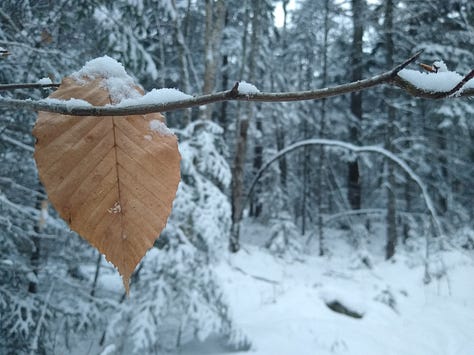

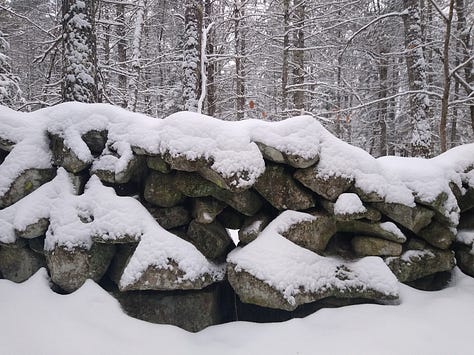
One of the best ways to briefly forget about the climate is to be out in the weather. For us to thrive, our skin and senses need as much exposure to sun and rain as ferns.
And, as we all know on some intuitive level, we need storms to reframe our daily lives. Storms erase the chalkboard. They force us to check our supplies, rush to the market, make contingency plans, and upend our schedules. Storms remind us that we too are being managed.
Storms also kill and impoverish people, destroy crops and homes, and upend much more than schedules. This has always been true, and will continue to be true for as long as there are people, crops, homes, and schedules. I don’t wish to diminish this truth, but neither do I want to focus on it this week. Storms have always been as much gift as curse. They transform. They are turbulence.
The messier the storm, the cleaner the break. I’ve watched trees uproot in New England hurricanes, shuddered as gale-driven waves broke over a New Zealand ferry, and been blown off my feet by katabatic winds hurling down an Antarctic glacier. Awe awakens amid the tumult of fear and laughter.
Two coastal storms, a few days apart, tore up the Maine coast recently. The damage was historic as record high tides combined with huge swells and hurricane-force winds to destroy wharves, homes, businesses, roads, and much more. Here at home, a mile from the water, the wind howled in the trees but did little harm other than editing out the weaker branches. Down the road from us, though, a house was lifted and rotated away from its chimney by the surge. And a small working harbor lost five wharves and suffered serious damage to others. The debris, when hauled off, filled forty-five dump truck loads.
At a famous lighthouse at the end of our peninsula, an old brick building lost two of its walls to waves of enormous height and power. Seaside roads are still closed because sections were erased or eroded. Stones seemingly floated like buoys, turning yards into patios. Heavy seas pushed a footlocker-sized rock under a chain-link fence and into the middle of a nearby tennis court.
As with any storm, there were moments of grace amid the chaos. The first was when an entire dining room floor, with an unscathed dining table surrounded by a jumble of chairs, stove, and cabinet, washed up intact on the shore of a place I look after. I’d heard that a century-old fish house and dock had been plucked from shore and broken apart in the waves a mile or so upwind, but didn’t know I was looking at its remains. The cove was full of chunks of dock and house, trash and family treasure, all woven into a deep mat of seaweeds ripped off their stony anchors. Heather and I spent a day pulling lumber and furniture and trash from the cove, trying to keep the worst of it from floating back out on the next tide as pollution or navigation hazards.
The second moment came after I posted a picture of some furniture online and immediately heard from the owners, a family that has been in the area since the 1850s. They came over at the next low tide, eager to salvage what they could of the family legacy. We walked the shore, picking up slide carousels and place mats, buoys and framed prints. One bit of art they were most excited to find was an old framed children’s poem titled Whether the Weather. It’s hard to imagine a more suitable poem for the moment this family, having been told by the insurance company that they wouldn’t pay for the loss, had to face up to an uncertain future:
Whether the weather be fine, Or whether the weather be not, Whether the weather be cold, Or whether the weather be hot, We'll weather the weather, Whatever the weather, Whether we like it or not.
These scenes of wreckage and salvage repeated in hundreds of coves and harbors, peninsulas and islands, all along the Maine coast.
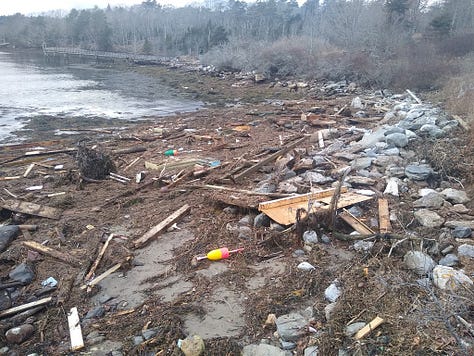
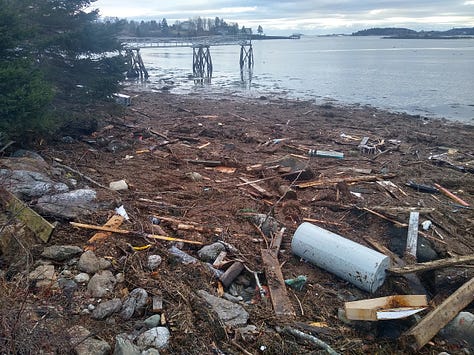
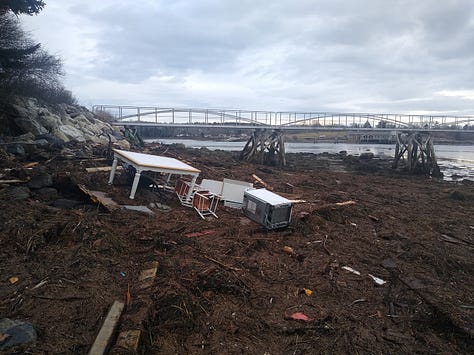
The wildness of these storms was both refreshing and sobering. To feel a storm arrive, throb and roar against the granite shore, and then pass over, shakes us out of our complacency. Hours spent plucking things from a cold cove left us more connected to our cold digits than to our digital lives. The shape of the real world reappeared, if briefly. It was certainly a good break from my headspace and homework.
But not a complete break. I couldn’t avoid seeing the fingerprints of the Anthropocene everywhere, as messy as the shoreline debris fields. In an era of disrupted planetary norms, is a storm just a storm anymore? It’s not just the ubiquitous fragments of blue foam that keep docks afloat, or the pervasive plastic trash of daily life. Nor is it merely the thousands of empty vacation homes of the wealthy squatting on coastal habitat.
Our fingerprints on storms range from the invisible to the catastrophic. On one end of the scale, microplastics, combustion particulates, and PFAS chemicals float alongside natural airborne particles in the atmosphere to act as precipitates for raindrops and snowflakes. On the other end, we’ve burned so much stuff that we’ve changed the behavior of atmosphere and ocean. Increased heat and turbulence are both cause and effect.
The burgeoning field of attribution science makes these larger fingerprints readable, if still poorly defined. We know with increasing certainty whether certain storms or other intense climatic events are more likely due to our disruption of the climate. But that’s only a statement of odds. We cannot point a finger at a storm and say, That’s us.
A recent Atlantic article suggests we imagine the coming chaos of climate change “through two interlinked concepts”:
The first is nonlinearity, the idea that change will happen by factors of multiplication, rather than addition. The second is the idea of “gray swan” events, which are both predictable and unprecedented. Together, these two ideas explain how we will face a rush of extremes, all scientifically imaginable but utterly new to human experience.
As with all of the other breached planetary boundaries – extinction rate, say, or increase of phosphorus and nitrogen flows – we’re struggling with the question of normalizing extremity. Plant and animal populations diminish or wink out of existence, and we hesitate to act. Megatons of artificial nitrogen and mined phosphorus poured onto industrial agriculture run off into choked waterways, and we hesitate to act. Hurricanes strengthen at lightning speed over warmer seas, and we hesitate to act.
(I should note that the science on whether we’ve begun to significantly intensify storms is still debated. Climate scientist Roger Pielke here on Substack, in particular, has determined that hurricanes and tropical storms are neither more intense nor more frequent. And Pielke has recently savaged NOAA’s popular billion-dollar disaster dataset as “an egregious failure of scientific integrity.” I haven’t taken a deep enough dive into the debate to have anything to add here, but check it out if you’re curious.)
One fundamental truth of the Anthropocene is that there is no place on Earth untouched, and no place to hide. Where farms and bulldozers and fishing boats could not reach, the altered atmosphere now warms and infiltrates with interventionist chemistry. The ocean thunders against the shore as it always has, though now the waves are warmer, less oxygenated, and more acidic. Yet how this ubiquity of human impact reveals itself is not simple and should not be described as simple. Turbulence in a complex system does not make its complexity more predictable.
One of the more complex truths of this time is that we have long been a transformational species. On one hand, humans seem uniquely responsible for ecological change and the extinction of many large (and perhaps tasty) animal species over the past 50,000 years. On the other, indigenous cultures across the globe have been managing vast tracts of land for millennia. Somewhere in that history is a set of ethics to underpin the management task ahead of us. We are eight billion, heading for ten billion, and we are hungry for resources we do not need, yet we must find lessons in the past to help us diminish our harms and enrich the future fabric of life. We must, as I wrote last week, become a keystone species that supports life rather than merely a headstone species writing epitaphs for the species we cared too little about.
This is a lot to salvage from a storm, certainly, especially one that mainly impacted a small state in a wealthy country. More to the point, I don’t want to be trapped in a doom spiral of attribution science, or even of attribution ethics. Nor do I want you or anyone else to be stuck thinking about what we’ve done every time the weather gets interesting. We need the clarity of weather against our skin and senses, and that’s okay.
In the end, a storm is a storm, even if it’s raining plastic. The Earth acts according to the forces that be, and we are now one of those forces. The Anthropocene is a storm across deep time, a storm on an epochal scale that will scar the genetic and sedimentary history of this planet. The sooner we stop the sources of harm – whether contamination or heat – the sooner we improve those features of our management portfolio…
Whether the storm has our fingerprints on it, or whether a beautiful and powerful storm is as much crime as scene, is less important than how we prepare for it and how we manage our response to it. The future of storms is one more thing to manage, as is our ability to find joy, awe, beauty, and laughter amid the fear of weathering what’s to come.
Thanks for sticking with me.
In other Anthropocene news:
From
at The Climate According to Life, an obituary for Millan Millan, the meteorologist and climate scientist who spent much of his career trying to remind climate scientists that our physical disruption of the green world has been as damaging to the climate as our emissions. It’s a lesson that still hasn’t been heard enough, sadly. If you’re unfamiliar with the concept, start here with Rob’s obit for Millan.From Knowable, the opportunity to farm coffee in a way that supports biodiversity also happens to be a return to the way coffee was traditionally grown: within a community of plants and trees that provide shade and a rich community of insects. Unsurprisingly, given that coffee grows in lush places, “studies have shown that shade coffee can contribute to supporting plant, insect, spider, lizard, bird, bat and mammal diversity.”
From Noema, a short essay from its editor-in-chief on the tension between green energy technology and protecting the environment. The solution lies upstream, in reducing our growing consumption (and population). I highly recommend you also read the 2021 interview with Vaclav Smil referenced in the essay. Smil does an excellent job articulating the physics and dynamics of an outsized human population asking too much of this planet. “Our greatest hope,” he says, “is to finally realize how wasteful we are.”
Also from Noema, whose articles are ad-free and consistently fascinating:
The history and future of chickens, which includes this line: “The world’s most abundant vertebrate is a product supplied by just two corporations.”
The sounds of worlds invisible to us, revealing both how deaf we have become to the world and how much there is beyond our comprehension. It’s a long piece with only a partial focus on the living world, but still fascinating.
The climatic and climactic tragedy of Doggerland, the once-lush primordial world lying now beneath the North Sea. Its relevance to the Anthropocene is in the “dark insinuation… that frightens us — a vision of migration, exile and shattered identities setting off the dominos of strife and conflict. It is the vision we fear for ourselves.”
From the Intercept, the EPA has suddenly stopped pursuing several high-profile environmental justice cases around the country because of a lawsuit from the Louisiana attorney general. The EPA is concerned that the lawsuit is intended to reach the Supreme Court, which is likely to gut the EPA’s ability to use the Civil Rights Act to protect communities of color from industrial contamination. Environmental justice activists in Louisiana, Michigan, and elsewhere have been left hanging, after years of building up evidence and media attention for these cases.
From Mongabay, a new study estimates that the amount of carbon stirred up by bottom trawling fishing boats is much higher than previously understood. The carbon released into the atmosphere (55%-60% of the total) is estimated to be double the carbon in the emissions from the fuel those boats are burning. The remaining 40%-45% remains in the ocean, intensifying the problem of ocean acidification. Bottom trawling is one of the least-known of our large-scale destructive habit, wiping out life on the sea floor on a massive scale every year.
From the Volts podcast, a conversation with the CEO of a company looking to revolutionize battery recycling in a clean and effective manner. If you’re wondering how a world filled with batteries is going to recycle those batteries, this looks like excellent news. The conversation is a bit wonky and thick with chemistry, but well worth your time. In related news, the Times explores the reality that much of the rare earth metals we’ll need for future tech already exists in our old junk tech that hasn’t been recycled.
From the Post, a discussion of the planetary and personal benefits of setting a day aside to unplug and do as little as possible. A sabbath, whether religious of secular, provides a break from the constant noise of society, a chance to reconnect with more important things, and a pause in the cycle of consumerism.
Two from
of Global Nature Beat here on Substack: First, his usual comprehensive weekly round-up of environmental news from U.N. committee activity to overfishing in Mauritania. And second, an important push to grow fig trees in the massive oil palm plantations of Malaysia could be vital for preserving what biodiversity remains.From
and his Climate Water Project, “Slowing our waters,” an interview with the author of Water Always Wins, a book wisely proselytizing for slowing water down across the landscape, whether in the wild or in neighborhoods. Slower water reduces droughts and floods, aids biodiversity, restores groundwater, protects against forest fire, and cools the climate.

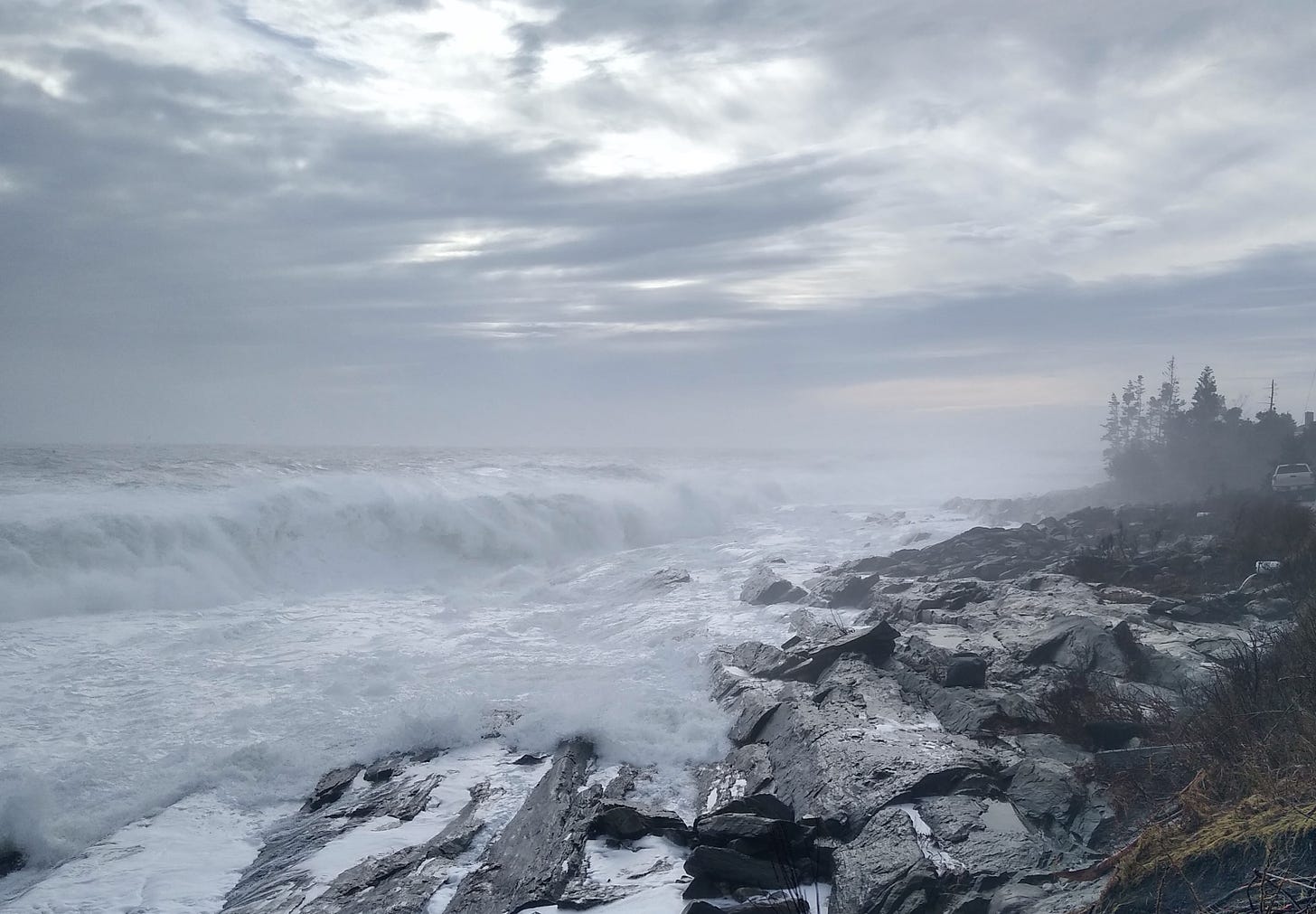

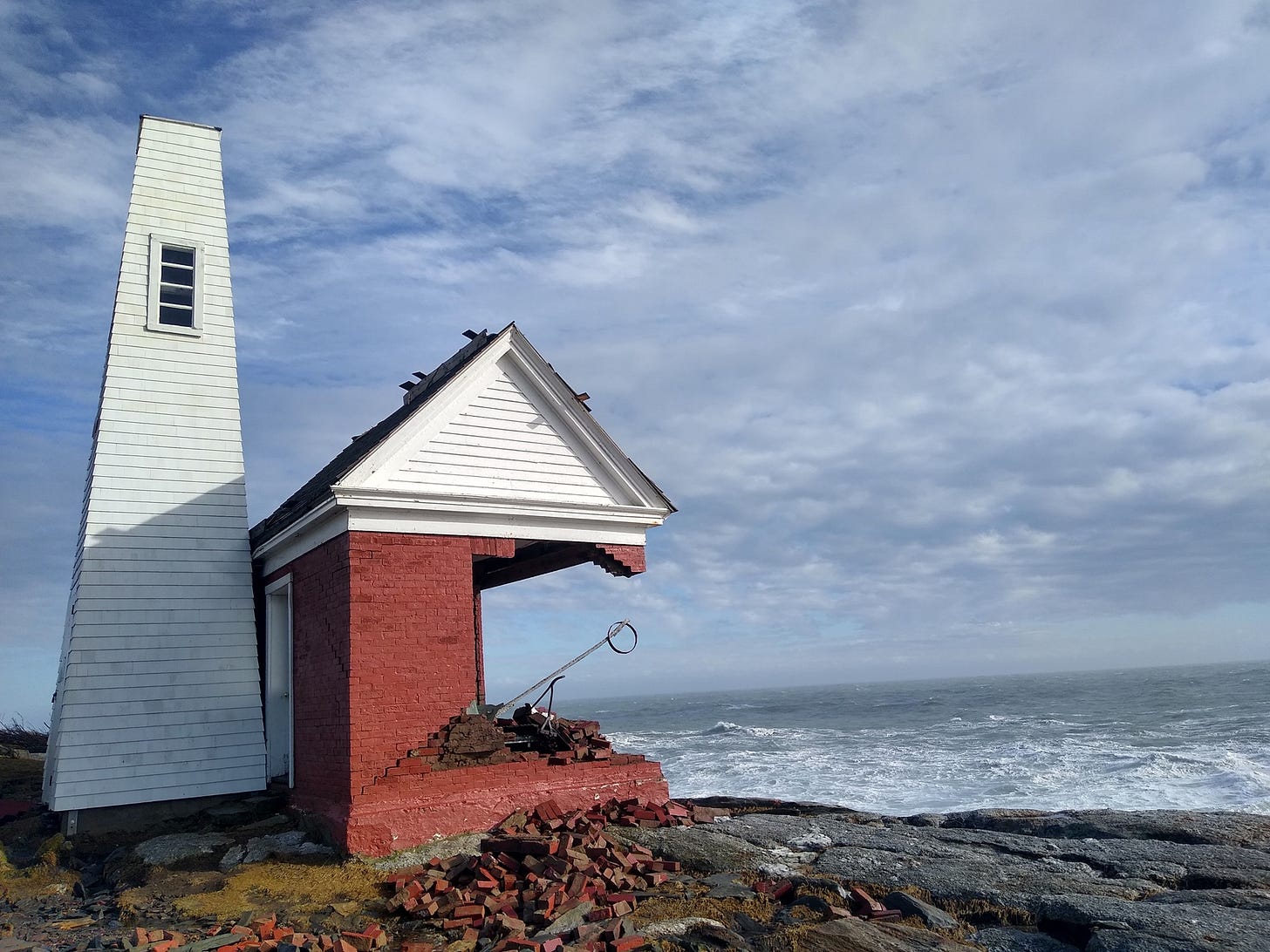
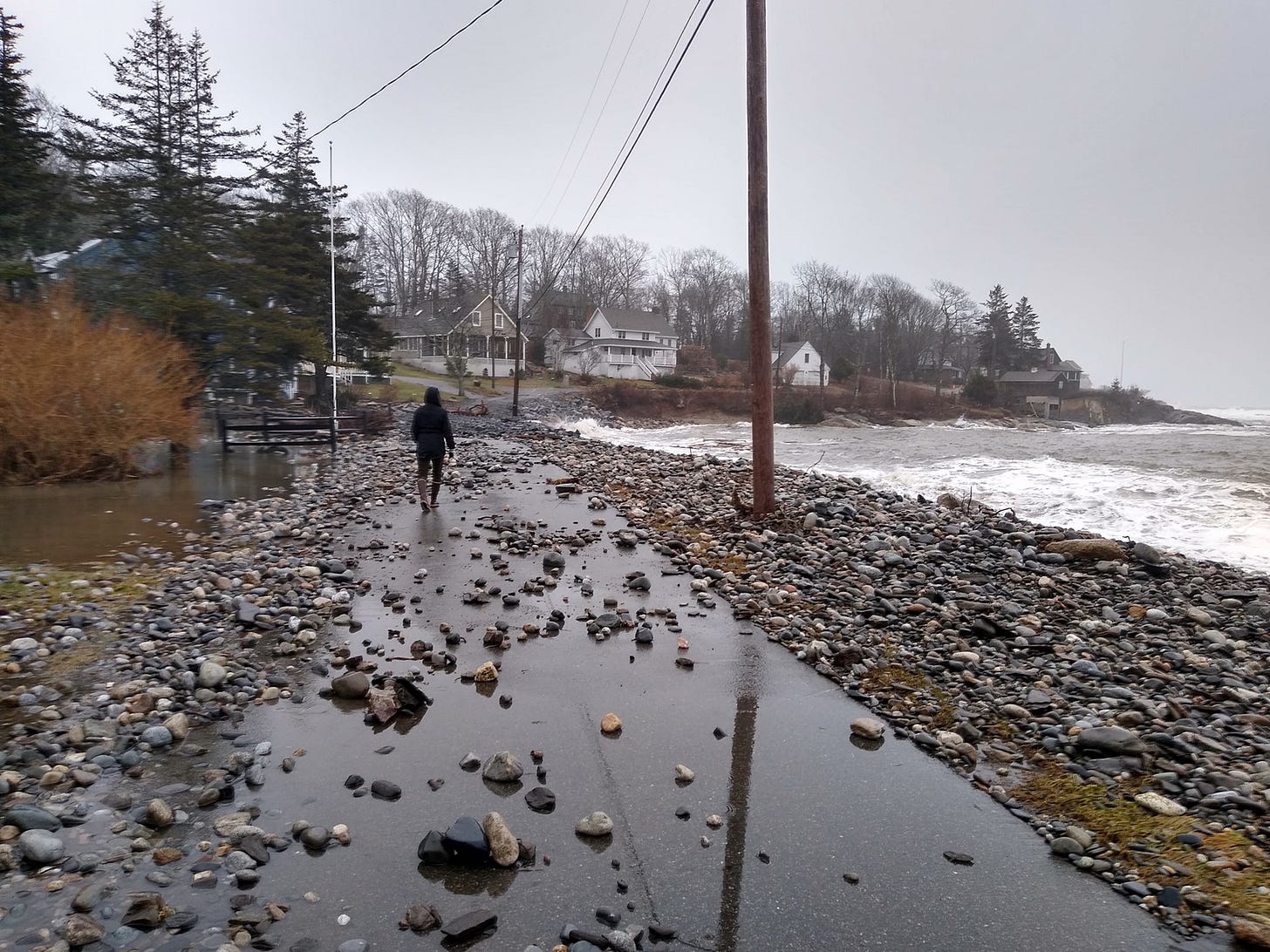
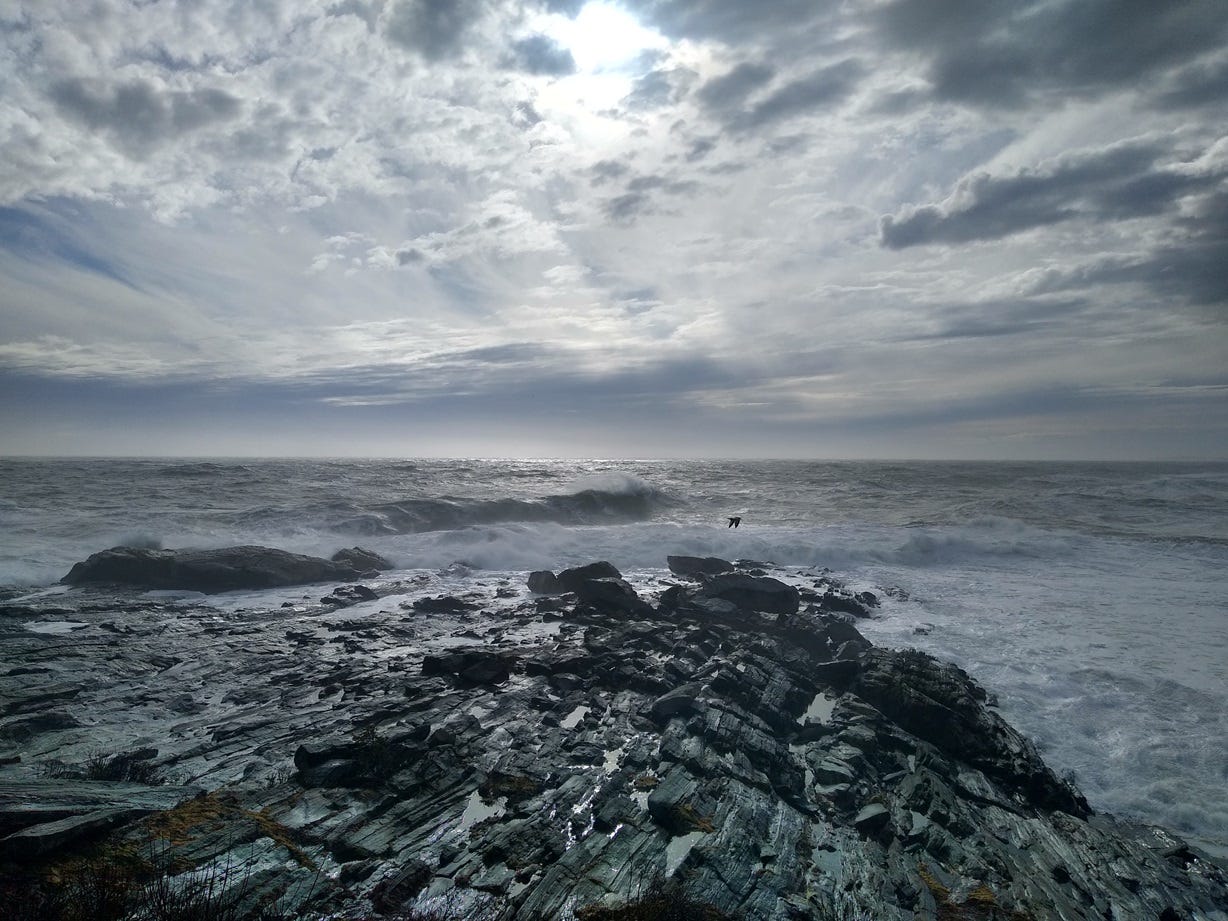

Very interesting article, enjoyed reading... the white table, the little poem about the weather, whether we like it or not. We don’t. But so touching anyway...
Loved this narrative very much.
It occurs to me that the greatest Storm of this era is Humanity. Loving, kind-hearted, compassionate, well-intentioned Humanity- the greatest storm to strike this blue marble since the savage blow of the Chicxulub asteroid 76 million years ago. The asteroid was insensate and couldn't try to make amends for the damage it wrought. Perhaps we are sensate, though barely so, and can mitigate what we have done. But just as the planet rung like a bell when the ancient asteroid struck it, Earth's systems have been hugely perturbed by our impact. It is unclear if things will ever go back to normal.
Depopulate. Rewild.